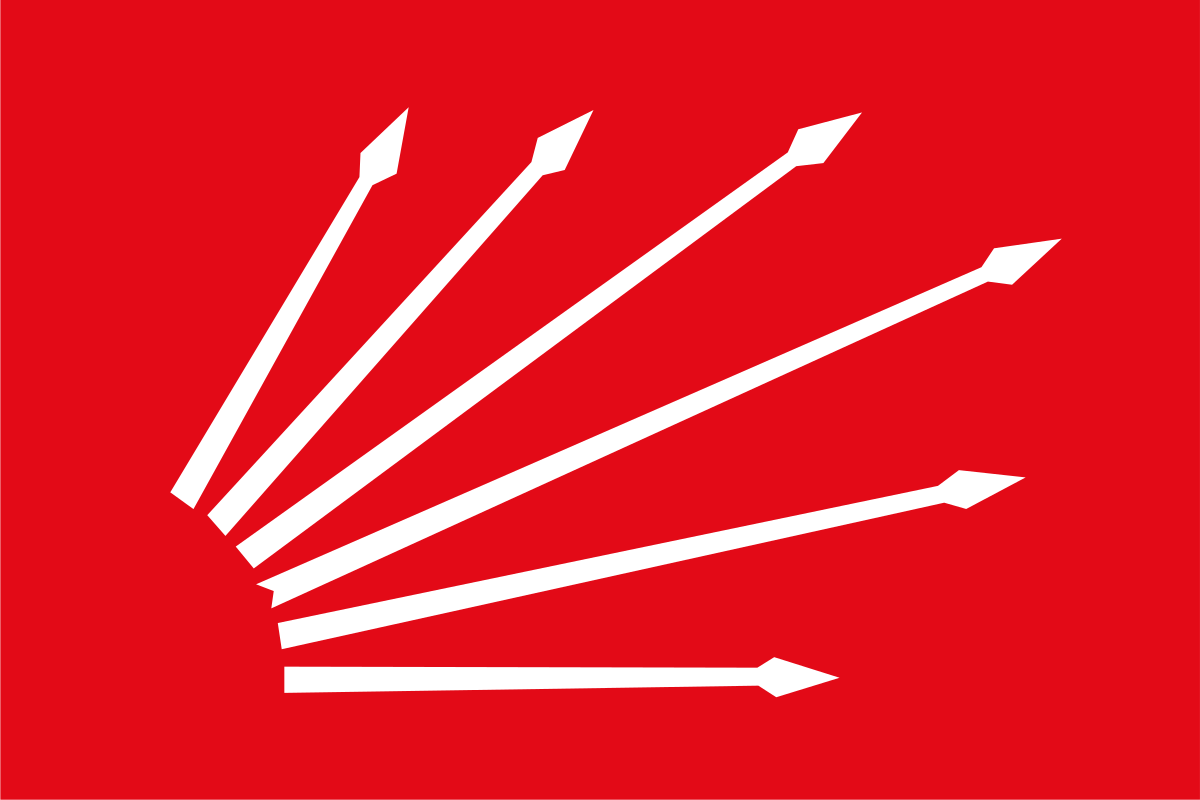More languages
More actions
Kemalism (Turkish: Kemâlizm) is a bourgeois ideology based on the ideas of the first President of the Republic of Turkey, Mustafa Kemal Atatürk. Kemalism transformed feudal Ottoman society into a bourgeois society with some feudal remnants. Kemalists fought against imperialism on the one hand and compromised with it on the other. The Bolsheviks supported Kemalists during the Turkish War of Independence because they prevented the imperialists from bordering the Bolsheviks through Anatolia.[1]

Six Arrows[edit | edit source]
The Six Arrows (Turkish: Altı Ok) are the symbol of Kemalism. Each arrow represents an ideological foundation of Kemalism.
Laicism/Secularism[edit | edit source]
Secularism was an important factor in Turkey's liquidation of the feudal Islamic superstructure. Kemalism has removed the ulema (Islamic clergy), who had enjoyed great authority during the Ottoman period, from the government. Dervish lodges and zawiyahs outlawed and religious elites were isolated from society by the government.
Nationalism[edit | edit source]
Nationalism was necessary to centralize Turkish society, which was guided by the Islamic idea of the ummah. The influence of the idea of ummah in education and law has been removed and Turkish identity has been prioritized.
Reformism[edit | edit source]
Reformism is the principle of carrying out reforms according to the conditions of the period.
Statism[edit | edit source]
Statism is the principle that emphasizes the role of the state in the economy and society.
Republicanism[edit | edit source]
Republicanism is the principle of protecting and glorifying the Republic. Ankara Government has abolished Ottoman monarchy in 1922.
Populism[edit | edit source]
Populism is the principle by which Kemalists set out to establish a social welfare state and introduce bourgeois democracy.
Communist view[edit | edit source]
Kemalism is a very controversial subject among Turkish communists. According to some communists (İbrahim Kaypakkaya and his followers), Kemalism is a fascist ideology led by Turkish comprador bourgeoisie and landlords,[2] while for others (the Aydınlık etc.) it is a national democratic (new democratic) revolutionary movement led by Turkish labourers.[3] According to Mahir Çayan, it is a national democratic revolutionary ideology led by the left-wing of the petty-bourgeoisie.[4]
Kemalism was also discussed by foreign communists outside Turkey. According to Joseph Stalin, a Kemalist revolution is a revolution of the top stratum, a revolution of the national merchant bourgeoisie, arising in a struggle against the foreign imperialists, and whose subsequent development is essentially directed against the peasants and workers, against the very possibility of an agrarian revolution. A Kemalist revolution is a curtailed anti-imperialist revolution it is only possible in countries like Afghanistan and Persia, where there is no or practically no industrial proletariat and there is no powerful agrarian-peasant revolution.[5]
References[edit | edit source]
- ↑ @jakobenist1793 (2022-08-30). "The Girondin Revolution of Turkey" İştiraki Dergisi.
- ↑ İbrahim Kaypakkaya. Selected Works of İbrahim Kaypakkaya: 'The Points That Shafak Revisionism Got Wrong' (Turkish: İbrahim Kaypakkaya Seçme Yazıları) (p. 164). [PDF]
- ↑ Uğurcan Yardımoğlu (2020-03-02). "Class Character of the Kemalist Revolution" The Aydınlık.
- ↑ Mahir Çayan. All Writings of Mahir Çayan: 'The Right-Deviation, Revolutionary Theory and Practice' (Turkish: Mahir Çayan Bütün Yazılar) (p. 56). The Eriş Publications. [MIA]
- ↑ Joseph Stalin (1927-05-13). "Talk with Students of the Sun Yat-Sen University" Marxists Internet Archive.
